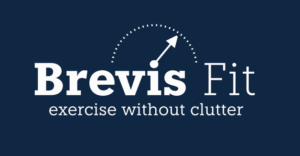Introduction
As we have stated in other posts, Exercise is defined under specific rules and guidelines. However, the concept of Exercise is in general conflated with other types of physical activities. In another attempt to sort out the confusion, we will outline the top 5 myths about exercise. With this list, you will have another set of facts, that will help you understand, how Exercise differs from other physical activities.
Number 1: Anything is better than nothing
The first myth is one of the most frequent ones. It simply states that if you manage to get some movement into your lifestyle, you are good to go and your health will be up for an upgrade. However, as we have stated in this blog post, the purpose of Exercise is not merely to burn some calories and move around.
The purpose of Exercise is precisely defined: Improve the life quality. And we do that by increasing our strength. This can however only be achieved through safe and efficient protocols, that take into account muscle physiology and human anatomy.
There are many activities that can hurt and reduce your life quality. Many times, we can even get a muscle strain by merely sleeping in an inappropriate position. So just doing something will not automatically benefit you and in some cases might even hurt you. With Exercise, however, our intention is very focused and we are using specific protocols that allow us to safely reach the stimulus, that will promote positive adaptations and change. And we don’t compromise our safety in the process.

Number 2: Lifting heavy is dangerous
This is another myth that we hear many times. For starters, heavy is always relative. Some individuals can do 50 squats with 100kgs of weights on their back. Others can barely do a single bodyweight squat. The point being, that heavy is always relative to the individual.
Now, trying to lift a weight that we can not control because (in part) it is too heavy for us to handle can lead to injuries. So lifting something one can not handle is problematic. But if you can handle the resistance in a good form, the chances of injuries will not increase.
However, for the purpose of benefiting from multiple adaptation mechanisms, we do encourage you to use a weight, that can be handled and exercised for at least 30 seconds and at most for 2 minutes. If you reach the point of momentary muscular failure before or after that interval, you should change the weight accordingly, for the purpose of better results.

Number 3: No pain no gain
This statement cam most famous from the movie Pumping Iron, starring Arnold Schwarzenegger. While persistence, perseverance, and short-term discomfort are all part of successfully reaching our goals, this statement does sometimes not get interpreted as such.
Many times the pain in the above statement is confused with the perception, that in order to have benefited from Exercise, one needs to feel physical pain days after (in terms of delayed onset muscle soreness – DOMS) or even possible injuries. This is however far from the truth. First, DOMS is more related to performing new types of movements, which make the fascia tissue stretch and form micro damages. It has very little to do with micro damages of the muscle fibers, which would lead to positive adaptations.
And injuries… I think we do not need to restate, that injuries should not be a part of an exercise program.

Number 4: Muscle confusion
This myth comes from 2 realizations:
- Badly designed resistance programs, can not produce sustainable and constant results and
- We need around 2 to 4 weeks of practice to learn a particular movement pattern.
Combining these two realizations, the only way that bad resistance programs can produce some measurable results is to always be in the state of learning and adapting to new movements. It is in the initial phase of learning a particular movement pattern, where our muscles don’t change much and all we improve is our neuronal connection and efficiency of performing that particular movement pattern. This makes us more efficient performing the movement, but not much better overall when it comes to muscle quality.
Because flawed resistance programs do not improve our muscle quality consistently, the only measure of success is to do new and different movement patterns frequently, in order to at least showcase some improvement in the short term, even though it comes as a result of learning to perform the movement pattern more efficiently.

Number 5: Functional movements
Functional movements are quite a vague term since every movement we can perform has a particular function. Still, the idea (as I understand) is to mimic movement patterns we perform in our daily lives, with exercise. This however is a big mistake. Activities we perform daily, are part of our skill set, which however should not be overloaded with resistance. If we need to strengthen our muscles, we do that through movements, which this particular muscle is responsible for. With exercise, we train muscles, not movements.


